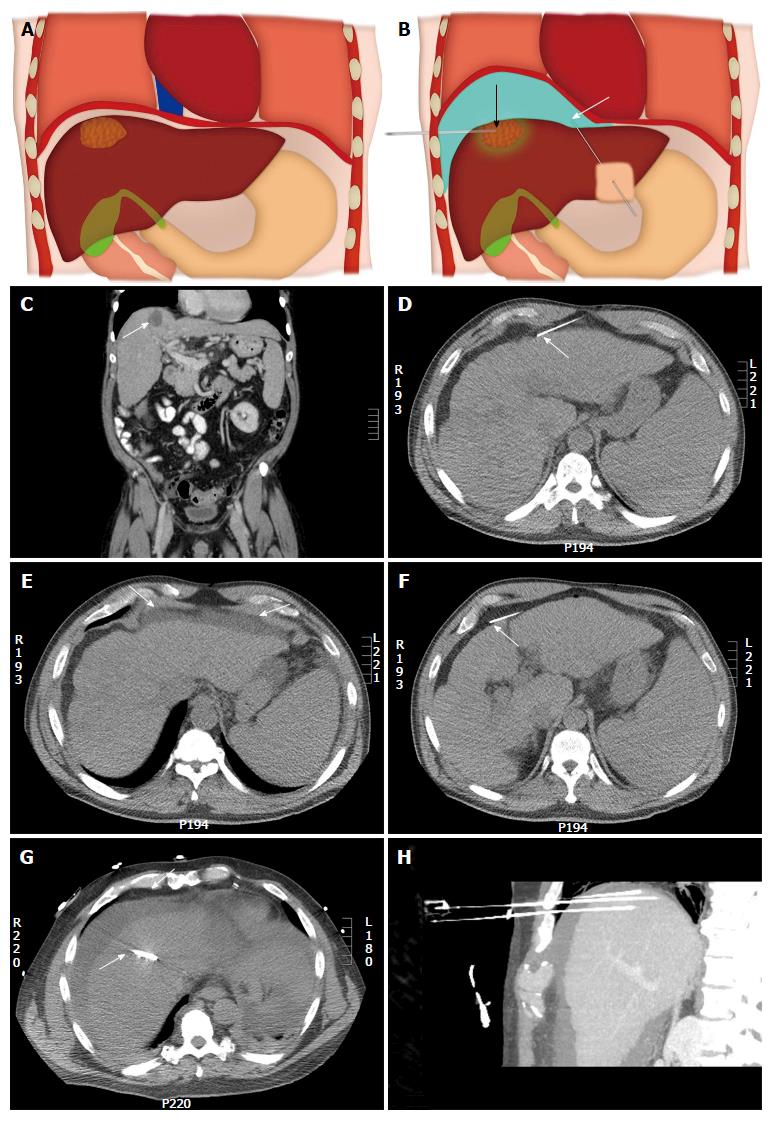Copyright
©The Author(s) 2017.
World J Hepatol. Jul 8, 2017; 9(19): 840-849
Published online Jul 8, 2017. doi: 10.4254/wjh.v9.i19.840
Published online Jul 8, 2017. doi: 10.4254/wjh.v9.i19.840
Figure 8 Illustration of the upper abdomen demonstrating the hydro-dissection technique.
A: Coronal colored image shows a hepatic dome lesion very close to the diaphragm; B: Coronal colored image after hydro-dissection (shown in blue color) shows the separation of the dome of liver from the diaphragm which improves percutaneous access to the lesion and limits diaphragmatic injury. White arrow shows the needle for hydodissection and black arrow shows the needle into the lesion. An example of a hepatic dome lesion (C) (arrow) where hydrodissection was attempted by needle placed anteriorly (D) (arrow); E: Axial computed tomography showed accumulation of fluid within the properitoneal fat (arrows); F: The needle was repositioned with the tip of the needle into the peritoneal cavity (arrow); G: Successful hydrodissection achieved using instillation of 500 cc of D5W through the needle (arrow); H: The fluid was used to create a safe path for radiofrequency ablation of the hepatic dome hepatocellular carcinoma. Sagittal Maximum intensity projection image demonstrating the artificial ascites and electrodes in position in the hepatic dome lesion.
- Citation: Kambadakone A, Baliyan V, Kordbacheh H, Uppot RN, Thabet A, Gervais DA, Arellano RS. Imaging guided percutaneous interventions in hepatic dome lesions: Tips and tricks. World J Hepatol 2017; 9(19): 840-849
- URL: https://www.wjgnet.com/1948-5182/full/v9/i19/840.htm
- DOI: https://dx.doi.org/10.4254/wjh.v9.i19.840









